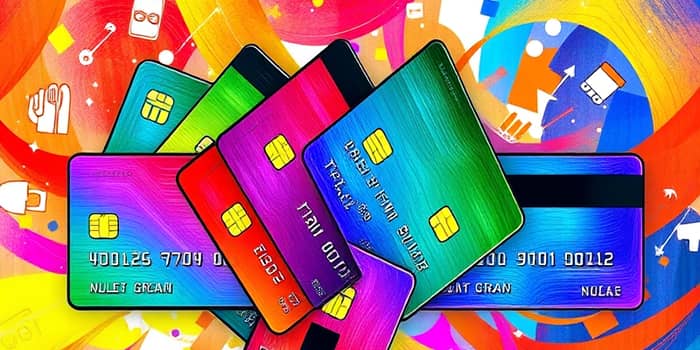
Managing personal or business finances can feel overwhelming when all transactions are lumped onto a single credit or debit card. By assigning specific cards to defined spending areas, you not only streamline budgeting but also unlock additional perks and security benefits.
At its core, dramatically improved budgeting and organization springs from pairing each major spending category—such as groceries, dining, or travel—with a dedicated payment card. Instead of sifting through pages of monthly statements, you instantly know where your money goes by glancing at each card’s activity.
This approach also simplifies budgeting. When you devote one card to entertainment expenses, you can set a monthly limit on that card and visually enforce how much you spend on movies, concerts, or streaming services.
Additionally, for tax reporting or work reimbursement, dedicating a card to business-related purchases provides clear audit trails. At year-end, accountants can easily separate deductible expenses, reducing the time spent reconciling mixed-use statements and lowering the chance of missed write-offs.
One of the most compelling reasons to separate cards by category is the potential to optimize reward earnings strategically. Credit card issuers often incentivize specific purchase types with elevated cash back rates, extra points, or bonus miles.
In addition to static category rewards, many cards introduce limited-time bonus offers or promotional rates. By matching a short-term bonus—such as 5% back on online shopping during holiday sales—with the right card, you can stack rewards on top of your baseline benefits. However, always consider the interest rates and ensure you pay the full balance to avoid negating reward gains with finance charges.
Beyond rewards, using separate cards enhances visibility into each category’s outflows, making it easier to spot anomalies. With quicker response to fraudulent activity, you safeguard your finances by isolating any unauthorized charge to one card.
Consider the case of Jane, a freelance photographer. She uses one card exclusively for travel expenses—airfare, car rentals, and lodging—and a second card for everyday purchases like coffee and office supplies. Each billing cycle, Jane reviews her travel card to reconcile receipts and claim business deductions, while her daily card helps her stick to a tight monthly budget.
Anna, a busy professional, allocated a third card exclusively for streaming and subscription services. Prior to this, her streaming expenses blended with dining charges, making it difficult to track rising entertainment costs. With one card assigned, Anna negotiated bundle deals, monitored renewal dates, and even discovered opportunities to switch to more cost-effective plans. The transparency afforded by her subscription card helped her redirect underused services and subscriptions.
On the corporate side, a mid-sized firm issues three card types to its marketing team: a purchase card for vendor orders, a travel and entertainment card for conferences and client dinners, and a fuel card for company vehicles. By integrating these cards with the company’s accounting software, finance managers perform real-time spend analysis and ensure avoid overlapping categories on multiple cards.
Managing a wallet of several cards might seem daunting, but following a few best practices can keep you on track:
Leverage digital wallets and mobile apps to group virtual cards by category. Many issuers allow you to name virtual cards, so your grocery card can be labeled “Supermarket,” for instance. For physical cards, consider carrying them in color-coded sleeves or separate wallet compartments. This tactile system serves as a visual cue at checkout. Regularly purge old cards that no longer serve a purpose, and securely shred any plastic you retire to prevent identity theft.
While multiple cards offer undeniable perks, they also contribute to the global plastic waste problem. Studies show that over 76 million plastic cards ended up in UK landfills over five years, and each card takes up to 100 years to decompose.
Beyond waste, the economic cost of producing each physical card can reach $5, encompassing materials, shipping, and manufacturing. Multiplying that by millions of consumers quickly scales into significant environmental and financial outlays. Companies and consumers alike are now questioning whether the marginal reward lift justifies these costs. Early adopters of virtual payment solutions report lower operational expenses and reduced carbon footprints, indicating a promising shift in the payments industry toward sustainability.
To maximize the benefits of separate cards:
If you find yourself skirting the fine line between optimization and complexity, consider consolidating categories or embracing a hybrid approach with maintaining a concise card inventory.
Finally, adopt a habit of weekly statement reviews. By scanning each card’s latest charges, you can catch irregularities early, adjust spending patterns in real time, and maximize every dollar. This ongoing discipline turns passive card ownership into an active financial habit, reinforcing accountability and long-term success.
Embracing separate cards for distinct spending categories transforms the way you manage money. From easier tracking of expenses to unlocking tailored rewards, this strategy turns ordinary purchases into powerful financial levers. Whether you’re an individual aiming for personal budgeting mastery or a business seeking operational control, categorized cards deliver both precision and flexibility.
Start today by evaluating your current spending, choosing the right cards, and setting up the systems that will keep you organized. With a purposeful, category-driven approach, you’ll not only reclaim control over your finances but also harness the full potential of your credit and debit cards.
References













